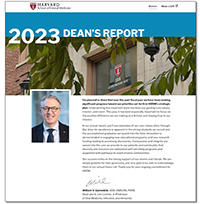
I have always loved to build. What began as obsessively stacking building blocks as a little girl evolved into a love for physics, creation, and design. I was fascinated by the ways innovative devices could transform the fields in which they were introduced, how past data could influence future methodologies, and how our own designs could be used to improve the health of so many. As I began college, there was no doubt in my mind: I would be studying mechanical engineering. That was until my own dental work began.
I was born congenitally missing 13 permanent teeth, a non-syndromic oligodontia that meant my early 20s were spent in the dental chair undergoing implant placement and heavy amounts of dental work. Dentistry, a field that I had only slightly considered pursuing as a career, became interwoven into my daily life—my self-esteem, ability to eat, and basic functioning now more than ever tied to my oral health. After spending so much time in the dental office and witnessing how much of a change my dentist was able to impart on my emotional and physical well-being, I began to appreciate the beauty in dental technologies: the way dental implants were transforming oral prosthetics, the 3D scanner that so effectively captured minuscule aesthetics, and the innovative techniques that were intricately interwoven into the dental field. It didn’t take long for me to realize that dentistry was my future. A field that so beautifully combined the engineering I loved with the medicine that had a direct effect on the patients I could treat.
Today, my focus is on the forefront of dental technologies—integrating artificial intelligence (AI) into dentistry. AI technology enables machines to mimic human-like thinking and decision making, training machines to recognize patterns from previous data to perform tasks and solve problems. In clinical dentistry, AI’s potential includes more accurate and efficient diagnostics, creating personalized treatment plans catered to each patient’s history and needs, and improved educational tools for providers in the form of summarizing academic publications or simulating clinical scenarios. Administratively, AI can be used to improve patient communication, education, and management to allow the clinician to devote more time to providing direct patient care.
Studying at Harvard allows me to be at the forefront of this integration. My research focuses on utilizing machine learning to enhance dental practice. Coming from an undergraduate background in bioengineering, I have been creating models that can be applied to the dental field. Utilizing cephalometric measurements, for example, I have worked on a project that can accurately classify a patient into vertical and horizontal maxillofacial morphology. With data of the oral microbiome and salivary biomarkers, I used AI to test the success of using salivary information for COVID-19 prediction. And for the general education of dental providers, I have published works that demystify the technology behind AI and describe how we can best harness the technology while still being cognizant of the very significant associated risks.
I was honored to present my work and learn from pioneers at HSDM’s first Global Symposium on AI in Dentistry. I was given the opportunity to be in a room with the CEOs and leading researchers who are creating cutting-edge technologies focused on improving medical care for our future patients. From the speakers, I learned a tremendous amount about the new technologies being created and the areas of most need in dentistry. At the poster presentation, I understood the direction of where AI innovation was heading and saw the huge potential for increased prediction, diagnostics, and personalized care for our patients. But most importantly, in my interactions with clinicians and researchers from all over the world, I understood different perspectives, concerns, and aspirations of where increased AI integration can lead us.
Artificial intelligence has the potential to revolutionize the way we perform dental care, improving diagnostic precision, tailoring care to each patient and their specific needs, and giving us generative capabilities to educate patients and improve their dental experience. Given such substantial benefits and the rapid pace of development, its integration into dentistry is not just beneficial, but inevitable. Just as the study of material sciences, pharmaceutics, and new mechanical devices are integral to the study of dentistry, so too should be the incorporation of AI into our dental curriculum. We must equip dental students with the necessary knowledge to understand its associated technology, risks, and benefits. HSDM’s AI Symposium paved the way for such educational initiatives, setting a precedent for future conferences and platforms to convene leading minds in the field. These gatherings and the education behind them are crucial to establish best practices and ensure the safe and effective integration of AI into dentistry.
Now, more than ever, I realize that my love for building and creating has found its purpose in dentistry. The dental landscape is brimming with opportunities for innovation and technological advancement, and AI holds the key to unlocking many of these new frontiers. I envision a future where AI empowers dentists to provide improved care, facilitates educational growth, and streamlines administrative tasks so that the clinician can focus on what matters most: the patient. I envision integration of AI into the predoctoral curriculum, where future dentists can understand the associated risks and necessary foundational knowledge to best utilize the technology. I am beyond excited to be studying at Harvard as we cross this frontier, where I hope to play a role in integrating AI in ways that benefit the future of our field.
Student Perspective by Cami Tussie, DMD25


